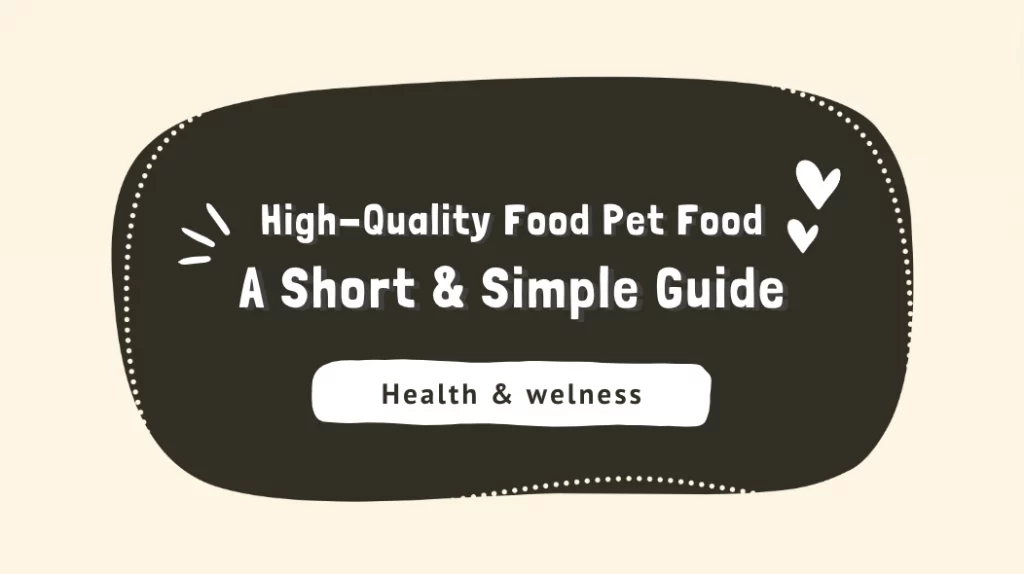You are what you eat! And the same thing applies to your pet. Good quality products made with nutritional ingredients will also result in a better quality of life.
It might be difficult to tell the difference just by looking, as most kibble looks the same. Some pet foods brand will use this in order to sell low-quality ingredients disguised as good-quality products. Though the low price may seem tempting at first, low-quality products usually show to be more expensive in the long run. Switching to proper nutritional products will often reflect in significantly lower veterinarian bills, as many health issues are a result of poor nutrition.
But fewer visits to the vet are not the only benefit of feeding high-quality pet food. Longtime benefits include more energy, reduction in inflammation of joints, less shedding, cleaner teeth, a stronger immune system, a healthier digestive tract, fewer infections, and a healthier, happier pet.
In this article, we’ll give you 3 simple tips and tricks that you can use when shopping for food for your pet.
1. Read the ingredient label
Clever marketing and colorful bags may make seem like your pet is eating like a royal – while the exact opposite is the case. Look out for signs of prolonged tiredness, shedding, or a dull coat, which may be an indication that your pet isn’t receiving all the needed nutrients.
When buying pet food, the rule of thumb is to always read the ingredients label, which gives an honest indication of the quality of the product. Reading the label is a great start but what do you need to be aware of? We’ll go through that in the next section.
2. Avoid meat meals
When in doubt about what food to buy your pup, the best thing is to have a thorough look at the ingredients. If the product consists of an overwhelming amount of ingredients, then a great tip is to use the first five ingredients as an indication of the quality of the product.
High-quality products will contain meat and not meat meal as the first ingredient, whereas lesser-quality product mostly consists of meat meals, other types of meals or cheap fillers such as corn or wheat.
Cheap ingredients will usually lead to a less palatable product, which is why some brands compensate with artificial flavoring and coloring. Products rich in natural sources of protein are not only more close to your pets’ natural diet- it also results in a great-tasting product.
When feeding your pet good quality products, you won’t have to feed him as often. High-quality products will keep your pup full longer, while still providing the necessary nutrients. As a result, less waste is produced as well.
3. Be aware of the statement “X% of protein from meat”
Many pet food brands are misleading including packaging statements such as 90% protein from meat.
At first glance, it might seem like they include 90% meat in their recipe which is often not the truth. Usually, it means the other ingredients are very low in protein (potatoes, rice, tapioca). Automatically, the protein comes from the meat. Therefore, a pet food brand using the statement, “90% protein from meat”, can actually contain very little meat and have a low protein content and an overall poor nutritional value.
The manufacturers using this claim also include very simple carb sources with low protein content e.g tapioca in their recipes. This causes a spike in your pet’s blood sugar and leads to a poor energy level throughout the day. In the long run, your pet risks getting various of health-diseases such as diabetes.
We know this sound complicated – and for a good reason, as the pet food companies want you to be confused weakening your capability to make a sound decision for your pet. A long story short, we’d advise you to look at the first few ingredients on the label to identify if they contain meat – not meat meals or any other type of meals. An example of meat is “chicken”, “chicken liver” or “beef”. Additionally, you should look out for by-products and aim for choosing whole foods such as “rice”, “chickpeas” or “carrots”.
If you are on a budget, you can opt for labels containing “meals” but make sure the recipe includes whole foods as well.
You can learn more about label tricks that exist in the pet food industry in this article here. If you are looking for healthy food, topper, or treat, you can check out our products at pledgecare.org.


very nice communication
Thankyou so much for your quality information